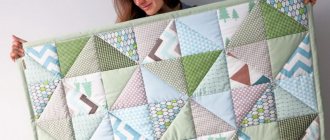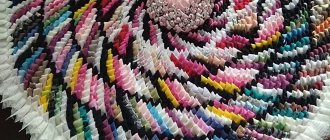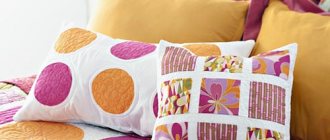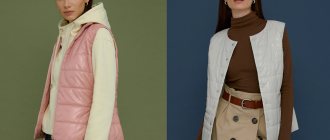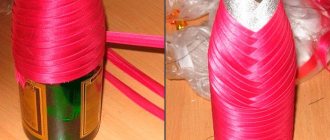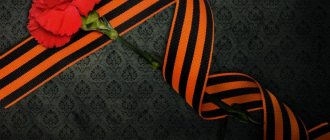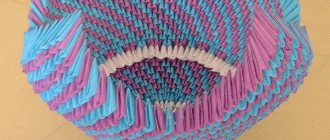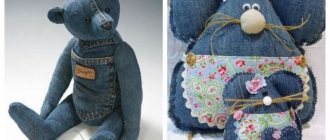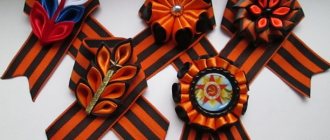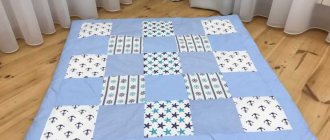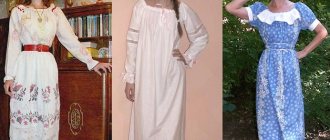Reads: 1,586
Reading time: 7 min.
no comments
If you love the most original things, then patchwork is for you. In such an outfit it is simply impossible to go unnoticed - patchwork clothing ideas for women become the very highlight that must certainly be in the image.
Don’t think that patchwork is only appropriate for outrageous looks or is only suitable for bohemians. Items made from scraps can harmoniously fit into a rather discreet outfit for every day.
What is patchwork
Craftsmen call patchwork many types of needlework, in which diverse parts are combined into one finished product. If we limit ourselves to wardrobe items, then patchwork is a technique for creating a canvas from individual flaps. From such fabric you can cut and sew a thing of any style.
There are several types of patchwork:
- Traditional or English, which uses flaps of the same size and shape.
- Сrazy (translated as “crazy”) - here randomly shaped flaps are sewn together, creating fancy ornaments (often the crazy technique involves joining parts with a zigzag seam and additional decoration of products with beads and seed beads).
- Quilting – bedspreads and blankets are often made using this technique; the products are supplemented with lining and insulation; outerwear is often found using the quilting technique.
- Knitted patchwork - not scraps of fabric are used, but knitted motifs specially created for a specific idea.
- Japanese patchwork - thematic images, most often landscapes, are made from multi-colored patches.
- Imitation is a product made of printed fabric that imitates patchwork.
The advantage of patchwork sewing is that an ultra-fashionable item can be sewn from almost nothing by cutting old clothes, bed linen, and leftover fabric into pieces. Let's see how to properly combine patchwork items with other details of the image, and evaluate fashionable couture solutions.
Fur coats
Fur coats made from fur pieces are popular among girls who want to look fashionable and bright in a gray winter city. To create such models, leftover fabric is often used, so the products are not too expensive, unless we are talking about a designer fur coat. In order for bright outerwear to be the central element of the look, laconic items and accessories are selected to go with it. If you have old fur wardrobe items in different colors at home that have retained a presentable appearance, they can be used to make custom-made fashion items.
Down trends: what down jackets to wear in winter 2020-2021
Fashion brands
Famous brands and fashion houses actively promote patchwork and regularly demonstrate such models as part of ready-to-wear and even haute couture shows.
The photo shows a patchwork style in denim from the Tom Ford brand collection in the form of light flared trousers. You can make this model yourself using parts from 2-3 pairs of old jeans:
The Chloe brand presented the public with a light chiffon midi skirt, made from large fragments of material with completely different prints.
Missoni uses details with geometric patterns, combining them into semi-classic jackets and trousers. Things look discreet thanks to the harmoniously selected colors:
Givenchy offers fashionistas a sweater in dark blue shades made from knitted squares:
Sportmax have released a bright sweatshirt made from scraps of knitwear and footer in different sizes.
The composition looks unified thanks to the monochromatic elastic cuffs and the same elastic along the bottom edge of the product. The elastic band acts as a frame that holds all the variety of flaps inside.
Of course, not all the looks you see on the catwalk need to be replicated exactly. Fashion designers boldly combine several patchwork style items in one set, completely different in theme. In life, it is best to wear patchwork items with items of restrained style and neutral shades.
Patchwork rules - what the fabric should be
The result of the work largely depends on the quality and characteristics of the material. Many needlewomen prefer to make shreds from cotton fabrics. Their advantages are as follows:
- the material is easy to sew by hand and by machine;
- it does not change its color, preserving the colors;
- the fabric is easy to trim, the edges do not fray or fray;
- it has optimal weight and density;
- when sewing, the product will immediately take the desired shape and will not be deformed;
- The fabric will not shrink after washing.
The second popular option is pieces of linen fabric. The fabrics are quite wear-resistant, do not cause allergic reactions, and last a long time. Products made from flax allow air to pass through well, are quite warm and do not become electrified. Experienced craftsmen also make luxurious silk masterpieces. But it is quite difficult to work with, and the canvas is expensive.
Sew a patchwork blanket edging with your own hands: pattern, diagrams and description
Blocks made from patchwork stripes: what they are, what they look like, how to make them yourself
Coat
A patchwork-style coat is a rather impressive-sized product, so it should be complemented with the most modest elements possible. If you do not want to distort the proportions of the silhouette, choose something sewn from small scraps. Large blocks arranged asymmetrically are suitable for fashionistas with a curvy or disproportionate figure.
Wear a multi-colored oversized cocoon coat with dark gray skinny jeans and black low-top boots. Accessories include a knitted beanie hat and a black tote bag.
A long coat made of patchwork with a variety of prints can be worn with a white shirt or blouse and boots that match one of the colors present on the coat.
A cropped coat made of fluffy patches in pastel shades can be worn with a plain cloche hat and knee-high boots with a tight top.
Wear a patchwork coat reminiscent of a blanket or plaid with simple pale blue jeans and taupe chunky boots.
A coat in a single color scheme can be complemented with a thin, monochromatic but bright scarf or neckerchief, while shoes and bags should be in neutral colors that are not conspicuous and act as a background.
This coat does not go well with all things; choose the most discreet tones, plain materials, and discreet styles. The coat will be the central element of the image; it is already a spectacular product; you should not overload the look with additional details or prints.
Dress
Dresses in the patchwork style are presented in both boho-style models and more traditional solutions. These can be summer light sundresses or insulated options that can be worn with turtlenecks and various jackets.
This sleeveless sheath dress, which uses patches of white, black and cocoa au lait, can be worn over a crisp white turtleneck, paired with black heeled ankle boots and a creamy neutral handbag.
Accessorize a light flared dress with a belt with ¾-length midi sleeves with maximally open sandals and a straw hat.
Wear a fitted warm sundress in red-brown tones with a white shirt and boots the color of dark chocolate.
Pair this boho dress with crochet motifs with Indian-inspired sandals, lots of bangles and a woven handbag.
Shortened dress models can be safely worn with over the knee boots and stocking boots, and there is no need to hide part of the dress under a jacket.
A flared, lightweight sundress can be used as a skirt by wearing a loose, waist-length denim polo blouse over it. With this outfit, you can try on white sneakers or sneakers.
If a patchwork dress seems too bold to you, choose or sew a model in which only a few details are sewn from scraps. For example, the skirt of a dress can be plain, and the upper part can be made of patches or vice versa. Sleeves or even arbitrary inserts of different sizes can be made from the flaps.
Vests
The main rule for combining a patchwork vest with other details of the image is that the top should be plain. It can be a turtleneck, shirt, blouse, T-shirt, thin pullover and even a sleeveless T-shirt. In the case of a T-shirt, T-shirt or knitted long sleeve, a compact print on the chest is allowed, provided that the vest is made from not too colorful patches.
Vests made from patches come in different styles - straight, elongated, shortened like a bolero, fitted for office or even below the knee, made of light flowing fabric. Some vests can be worn as a blouse or sundress directly over underwear. Thin elongated models can be complemented with a belt - thin and barely noticeable or, on the contrary, wide and standing out against the background of ripples of flaps.
Similar rules apply to patchwork skirts and trousers - all shirts and tops must be plain. If you are wearing a knitted item like a sweater or jumper, make sure there are no large voluminous patterns. Even a plain item with large braids or “bumps” knitted on it may turn out to be too rich and unsuitable for proximity to a product made from patches.
0 Comments
Technological map - patchwork, patchwork technique
As with any technique, patchwork has a number of specific rules that must be followed. Experts shared some recommendations for beginning needlewomen:
- When working with fabrics, it is better to use tailor's scissors. They are sharper and longer than regular models. However, they must not be used for cutting anything other than canvas.
- If the fabric is new, it should be moistened with water before creating a patchwork. The material will shrink to a certain level. Craftswomen call this process decatification. After moistening, the fabric is dried and ironed. Otherwise, when the finished product is washed, it may become deformed due to shrinkage.
- It is impossible to work in patchwork technique without an iron. If you don't have steam or a humidifier, you will have to use a wet cloth to iron the work.
- When marking, you can use chalk or soap. Using a ballpoint pen or crayon will result in marks that may appear on the front side of the finished item.
- Before starting work, it is advisable to sort the fabric by color. In most cases, six tones are used as a basis - green, blue, red, yellow, orange and purple. But it all depends on the chosen shades. First we put the light ones, then the dark ones.
- When cutting, the grain thread must be taken into account. Otherwise, there is a high risk of deformation. The material must be cut according to its direction. If the canvases are new, the edge is taken as a guide.
- To transfer the drawing onto the material, it is better to use soft pencils or carbon paper of different colors.
